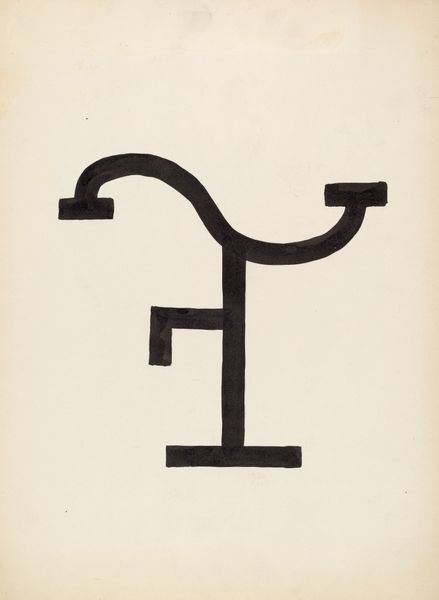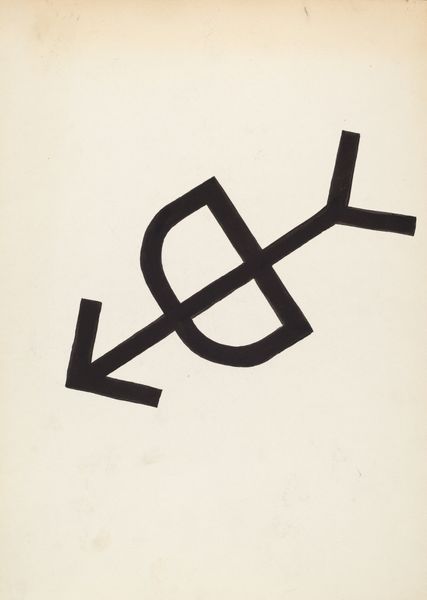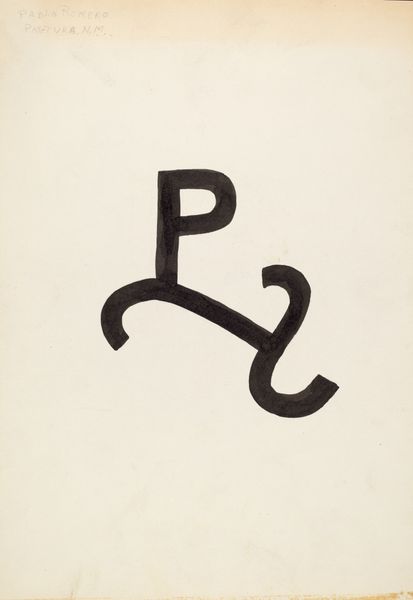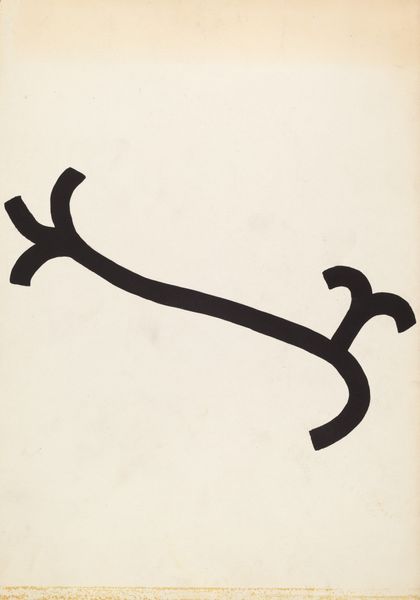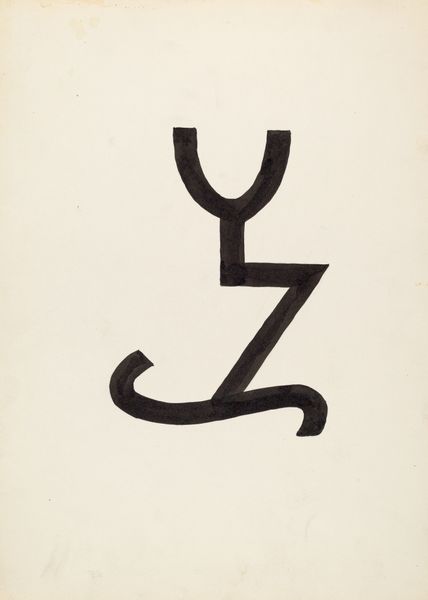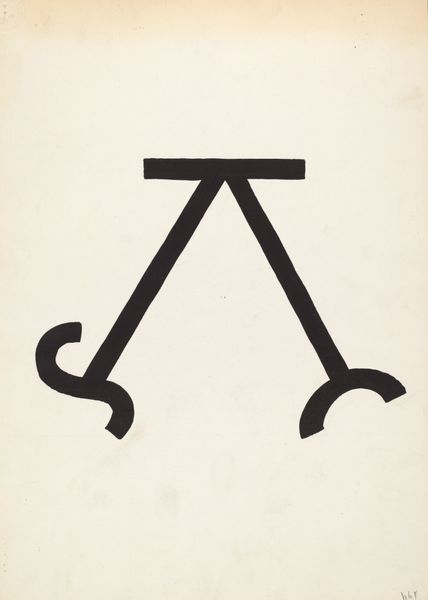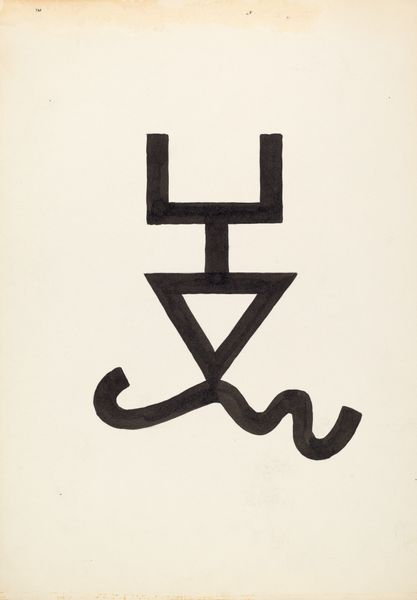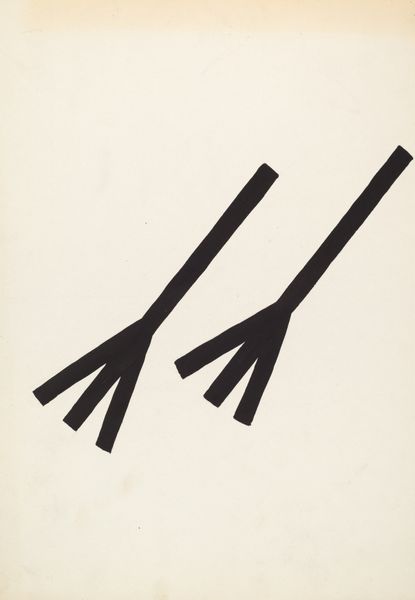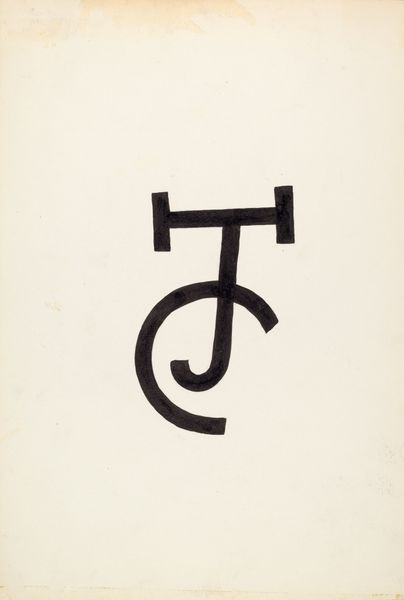
drawing, graphic-art, paper, ink
#
drawing
#
graphic-art
#
paper
#
ink
#
geometric
#
abstraction
#
line
Dimensions: overall: 33.9 x 23.5 cm (13 3/8 x 9 1/4 in.)
Copyright: National Gallery of Art: CC0 1.0
Curator: This is J. Henry Marley's "Cattle Brand," likely created around 1936, using ink on paper. Its simple and linear design presents an abstract yet symbolic figure. What are your initial thoughts? Editor: Well, it's strikingly minimal, almost brutally so. The thick, unwavering black lines give it a sense of weight and permanence, despite being just a drawing. The contrast against the plain paper creates an arresting impact. Curator: Agreed. Marley’s focus here directs us to the fundamental visual elements themselves, prompting a look at the socio-economic environment that produces its intended imagery: How would such design work to stake claim on animals considered both property and livelihood? The act of branding, its performance and utility, reduces the living to geometric ownership. Editor: That's fascinating when viewed against the historical backdrop. Cattle branding wasn’t merely an identifier, but an assertion of power, a mark of capitalist expansion into the American West, inextricably linked to colonial violence. It mirrors contemporary discussions of marking and control. The seemingly innocuous shape bears a far heavier narrative load. Curator: Indeed, and looking at the graphic economy and visual production, we see an interesting confluence. There’s a utilitarian aesthetic at play—a raw and direct methodology—emphasizing efficiency in application and visibility. The use of ink on paper in itself speaks volumes about the accessibility and adaptability required. This tool would've been rapidly reproduced, traded and re-interpreted by myriad workers, cowboys, ranchers, farmers. Editor: I also think about the labor involved. Applying the brand would not only cause pain and trauma to the animals. Ranching was also largely performed by Mexican-Americans, African-Americans and Indigenous folks in exploitative work conditions; the brand comes to represent a network of exploited beings that all bear its mark in differing ways. Curator: And it's worth considering how this imagery functioned within the evolving culture of the West. Brands became symbolic of specific lineages, individual aspirations, even collective identities. So this drawing operates both as an illustration of capitalist forces and the assertion of social narratives. Editor: Yes, precisely, turning it from a basic ranching identifier to an icon reflecting layers of identity, ownership, and historical tensions. Makes me think how we ourselves 'brand' things even today through social media, asserting our presence, identity, and often unintentionally replicating cycles of exploitation. Curator: It does provide us an incisive look into the intertwined relationships between materiality, function, and social symbolism. Thank you, that added depth. Editor: And thanks to you; a stark reminder that even seemingly simple drawings can unveil intricate socio-political legacies.
Comments
No comments
Be the first to comment and join the conversation on the ultimate creative platform.

